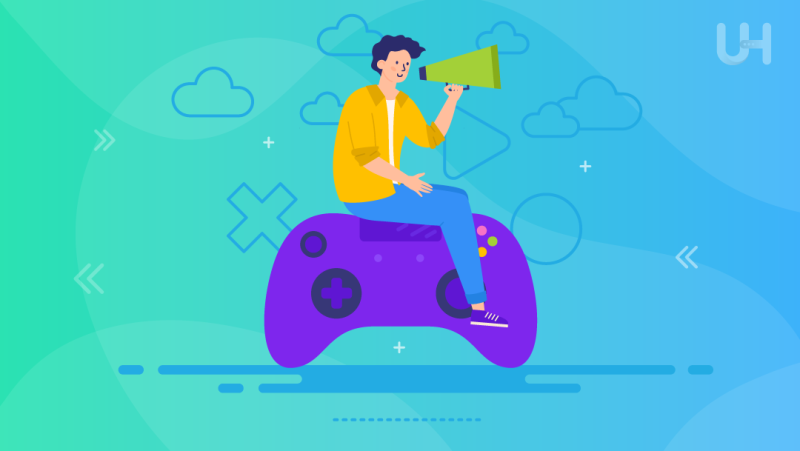Gamification Marketing is a particularly strong approach to modern digital marketing that uses game design to motivate consumers to take action. It stimulates the consumer to take certain actions by integrating game design into the process. On the other hand, introducing fun and reward systems into various tasks forms a natural phenomenon that establishes a habit of action, supports the will to participate, and encourages confidence.
In this article, we will explore the concept of Gamification Marketing, its strategies, and benefits, and provide illustrative examples of its successful implementation.
What is Gamification Marketing?
Gamification Marketing is an innovative strategy that integrates game elements and principles to engage and motivate consumers. By leveraging the internal human desire for achievement and reward, gamification marketing captures attention and promotes active engagement. This way, you can maintain the public’s interest, enhance engagement, stimulate motivation, and increase consumption.
While some of these are as straightforward as the annoying “spin to win” pop-ups you always skip on homepage sliders, others can be as fun as a fully immersive video game. Gamified marketing’s numerous abilities include:
- Points: Users accrue points through various activities, such as winning games or making purchases, which can later be redeemed for discounts or complimentary items. (Travel credit cards, for instance, effectively utilize this method.)
- Badges: Recognize customers’ achievements by awarding them badges; for instance, Grammarly grants badges like “Goal Crusher” to prolific service users.
- Levels: Tap into customers’ desire for progress by offering greater rewards as they accumulate more points. For example, earning 200 Starbucks Stars could unlock a free sandwich.
- Virtual Currency: Introduce a proprietary currency redeemable exclusively at your store, incentivizing repeat purchases akin to Kohl’s successful implementation of Kohl’s Cash.
- Leaderboards: Foster user competition by displaying their names and scores on your website or social media platforms.
- Countdowns: Create a sense of urgency by challenging players to complete tasks within specific timeframes.
- Progress Bars: Visualize customers’ advancement toward achieving the next level, enhancing their sense of accomplishment.
Additionally, gamification marketing provides useful data once consumer attention is achieved. It provides the ability to collect interactions if one is eligible to get rewards by availing their contact info or being invited to participate in leaderboards. The marketer can use this information to improve the marketing campaign via personal mailings, badges, subscriptions, and coupons in the future.
Furthermore, it inspires people to develop and distribute user-generated content (UGC). For example, whether users share their wonderful moments from the branded racing game or participate in a contest using a branded hashtag, its natural distribution and consumption are essential to inspire such visibility and meaningful engagement on social media channels.
Benefits of Gamification Marketing

The use of games in the form of simulations can play a complementary role in reducing the doubt or fear of a consumer when purchasing a new product or service. For example, the food retailer SPAR wanted to increase the number of sign-ups for their new customer’s loyalty program, “ SPAR Friends.”
To achieve the desired outcome, SPAR developed a Memory Game that was aimed at raising awareness of the loyal program in general, driving app downloads, and making it simpler for customers to sign up for a SPAR Friends account. The game informed the consumers of the benefits of signing up and rewarded them with prizes that could be redeemed in the app.
In this way, using the principles of gamification marketing, SPAR was able to eliminate consumers’ pain points in signing up for their club, making it a fun and engaging gaming experience. With affordable VPS hosting and the perfect gamification marketing campaign, you can also increase your brand awareness in no time.
Gamification marketing encompasses the following benefits:
- Educating customers
- Alleviating barriers to purchase or enrollment
- Boosting sales
- Engaging and incentivizing customers
- Cultivating positive customer experiences
- Strengthening brand presence
- Analyzing customers’ purchasing behaviors and sentiments
- Conducting pre-launch testing of new products and services
- Understanding the rationale behind customers’ product or service preferences
Based on the evident advantages of marketing gamification, it appears crucial to understand its implications for adapting to forthcoming changes in the context of web hosting, including developments in data-driven digital marketing and changes in customer behavior.
Maximize Marketing Potential With The Finest Hosting!
Unlock the full capabilities of gamification marketing with UltaHost’s top-tier hosting solutions. Choose from a range of managed e-commerce hosting options, each offering unlimited bandwidth, and expand your brand’s reach to a broader audience.
Examples of Gamification Marketing
Gamification has successfully penetrated marketing disciplines and taken an active part in creating interest-grabbing interactions in various industries. The following examples are notable:
Starbucks Rewards
Starbucks Rewards is an example of gamification in retail marketing. The loyalty program offers stars for in-store purchases via a mobile app that can be later used for free drinks, snacks, or goods. The program has two layers: the Green one and the Gold one. Clients are upgraded to the Gold level after reaching certain stars. With the help of layered systems, limited-time magical moments, and star-earning secret tasks, marketing management promotes frequent transactions.
Nike+ Run Club
Another application that utilizes gamification to motivate users to gain more experience is the Nike+ Run Club. The software allows one to track runs, create goals, and compete against other members. One of the things one can get from it is badges for completing different milestones, such as achieved distances or runs that took place at a certain time during the day. This motivates users to move more, creating a sense of community and a desire to continue using the brand.
Duolingo
The application used for one of the courses that also applies gamification to make the learning experience more exciting is the Duolingo language software. While tracking all of the phrases the user knows by heart, one also gets a streak not showing one to be the student of the user’s language but the other way around. Additionally, the app features a leaderboard where users can engage in friendly competition with peers or learners worldwide, augmenting the learning experience with a competitive element.
M&M’s Eye-Spy Pretzel
M&M’s pulled off an outstanding gamified marketing stunt referred to as the “Eye-Spy Pretzel” game. They challenged the public to discover a concealed pretzel from a photo of various M&M’s candies on a web portal. After acquiring viral recognition, the amusing yet uncomplicated activity successfully promoted new pretzel-flavored M&M’s by revealing how the game might push brand visibility and participation on social media.
Sephora’s Beauty Insider
This program uses gaming ideas to increase customer loyalty. Every acquisition earns participants points that can be exchanged for extraordinary products, samples, and experiences. Sephora, VIB, and Rouge have introduced insider levels, where every higher level offers more special rewards. Incentives like holiday specials, birthday gifts, and entry to special occasions come into the gamified interaction as well; the more clients granted, the higher their rank could be.
Domino’s Pizza Hero
Domino’s Pizza introduced the “Pizza Hero” app, allowing customers to create virtual pizzas by rolling out dough, pouring in the sauce, and selecting the toppings. The virtual pizzas that customers created were then available for purchase from Domino’s. The game included a scoring system and leaderboards, making the process of ordering a pizza interactive and fun. This out-of-the-box solution engaged the audience and drove sales.
Conclusion
To sum up, Gamification Marketing has transformed digital marketing for the better by applying gaming concepts to capture and inspire consumers effectively. As evident from the examples of Starbucks Rewards, Nike+ Run Club, and Sephora’s Beauty Insider, gamification leads to education, motivation, and the creation of brand loyalty among consumers. Consequently, in the changing patterns of consumers, gamification is a must for marketers to integrate into their marketing strategy to continue successfully operating in the developing sector of digital marketing.
Gamification marketing presents an opportunity to generate leads with minimal risk. Join the Ulta Affiliate Program by UltaHost to earn a substantial commission of at least 60% on every sale. Partner with an affiliate program that recognizes and values your contribution.
FAQ
How is Gamification Marketing different from traditional marketing?
Gamification Marketing utilizes game design elements to motivate consumer action, creating engaging experiences that drive participation and loyalty.
How can businesses leverage Gamification Marketing?
Businesses can implement gamified loyalty programs, interactive challenges, and rewards systems to captivate customers and foster brand loyalty.
Can Gamification Marketing be applied across different industries?
Yes, Gamification Marketing is versatile and can be applied across various industries, including retail, education, fitness, and entertainment, to engage customers, drive sales, and achieve marketing objectives.
What role does data analytics play in Gamification Marketing?
Data analytics enables marketers to measure the effectiveness of gamification campaigns, track user engagement, and gain insights into consumer behavior, preferences, and trends, allowing for continuous optimization and refinement of marketing strategies.








